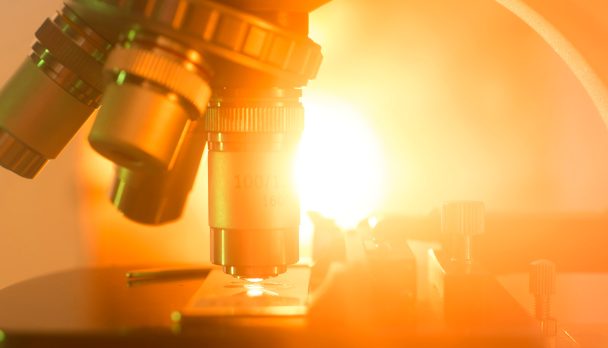
In “The Body’s Keepers,” Dr. Paul Kimmel presents a compelling exploration of the kidney, unraveling its intricate role as the regulator and metronome of the human body’s delicate equilibrium. With a meticulous examination of the kidney’s daily task of purifying the body from various toxins, Kimmel guides readers through the scientific, medical, and health evolution linked to our understanding of this extraordinary organ. Delving into the history of kidney disease, dialysis, and transplantation, the renowned nephrologist sheds light on the advancements in treatments and technologies that have transformed the care of patients facing kidney ailments.
Beyond the medical narrative, Kimmel exposes the harsh realities of inequities within America’s healthcare system, unveiling stories of exploitation and injustices. Through case studies, personal histories, and firsthand accounts, the book uncovers the shocking truth about the consequences of disparate access to care and the medical industry’s profit-driven practices.
Why do we have kidneys? Homer Smith, the New York University physiologist of the early and mid-20th-century who became the father of modern nephrology suggested that evolutionary changes in kidney structure and function were the key factors that allowed vertebrates to move from the nurturing environment of the sea and survive in the harsh terrestrial landscape, eventually becoming humans roaming the savannahs and building huge cities.
People know they have kidneys but don’t know why—or much about them. We know we need to urinate several times a day, and as we grow older, perhaps a few times after we go to sleep. The workings of the kidney are thought to be obscure—even to medical students and some seasoned practitioners, who often avoid the esoterica and leave the screening, diagnosis, and management of kidney ailments to superspecialists, the nephrologists. The intricate mechanisms underlying the work of the kidneys regulate our most basic physiologic processes.
What Do the Kidneys Do?
The kidneys, however, are also the amazing accountants of the body—the body’s keepers. When they work normally, they literally balance the books of body chemistry.
The kidneys match all the non-nutritional components of the foods we eat with equivalent losses in the urine and tightly regulate the composition of the blood, which feeds every organ in the body. Evolution has provided a fantastically dense array of tubules to put the blood through labyrinthine manipulations—a beautiful system, indeed, that allows exactly the right amount and type of waste products created in the body to be removed on a daily basis. The kidneys are also intrinsically involved in the integrated response to mortal threats to our integrity, as in people who experience rapid blood loss. The function of the kidneys is dependent on precise relationships in tiny spaces.
When the system doesn’t work, you die—often a lingering death with terrible breathlessness and delirious states followed by coma and cardiac arrest. This was the fate of most people with kidney failure in the United States and around the world until 1973, when Congress changed our national therapeutic agenda by establishing an entitlement for people with end-stage renal disease that provides dialysis and kidney transplantation to practically every American, regardless of financial status, through the Medicare and Social Security programs.
The Body’s Fluid Spaces, Sodium Distribution, and Homeostasis
The kidneys maintain the balance and amount of salt and water in our bodies.
They don’t do the work alone, but they are essential to this task. Physicians have known the body is composed mostly of water for many years. About two-thirds of us is water. A human weighing 220 pounds (100 kilograms) is composed of about seventeen and a half gallons of water. The body water is divided into two parts. First, there is the larger compartment: the fluid within cells called the intracellular fluid, which makes up about two-thirds of the total volume of the body’s water. The second component, which bathes the cells and includes the plasma water, is termed the extracellular fluid (ECF). The plasma component of the blood is relatively small, making up about 5 to 7% of the total body water (and about 20 to 25% of the extracellular fluid).
The sodium concentration of the extracellular fluid, and therefore the blood, is strikingly similar to that of seawater. The critical importance of the ECF is implicit in the poetic term that has been used to describe it: “the sea within us.” This environment, often termed the internal milieu, is remarkably constant in healthy people. This concept of constancy and the necessity to reset conditions to their baseline status when physiologic changes occur is called homeostasis. Homeostasis was conceived of by the great 19th-century French physiologist Claude Bernard, and the term is still in use today. Illness often poses a threat to the stability of the internal milieu and its homeostasis. Kidney disease frequently results in abnormalities of the volume and chemical composition of the extracellular fluid, specifically affecting the plasma component of the blood, our internal surroundings.
Maintaining that internal environment—the liquid portion of the blood that has the same concentration of salt as the ocean—prevents us from either having high blood pressure and swelling (if there is too much fluid) or experiencing severe fatigue or fainting from low blood pressure if there is too little fluid in our bodies. Paradoxically, the kidneys perform the function of maintaining the fluid volume mostly by managing the salt economy of the body rather than directly regulating water metabolism.
The Kidneys, Salt, and Water
The amount of fluid in the body—particularly the extracellular fluid, including the plasma volume—is determined by its sodium content. One of the key tasks performed by the kidneys is maintaining the balance between retaining and excreting sodium chloride (common table salt). The size and the composition of the sea within us is regulated by the kidneys.
The kidneys, however, are also the preeminent managers of the amount of water in our bodies. Some people drink only a little bit of water a day. They don’t like to be bothered with going to the bathroom while they’re traveling, at their desks, or in meetings. Other people like to drink relatively large amounts of water, to “flush out the kidneys” or to maintain their skin in what they suppose is its best condition.
How do the kidneys maintain an internal environment where the concentration of all the elements in the plasma is stable over days, weeks, months, and years in someone who drinks a quart of water a day and in others who might drink two gallons of liquid, on a whim, on a particular day? How do the kid-neys deal with a body that drinks three quarts one day and only three pints the next? The answer may seem fairly obvious. Some people void relatively small amounts of urine, with a deep color. Others excrete much larger amounts of pale urine, several times a day. Just how is this accomplished?
The answer lies in the microscopic structure of the kidneys—their blood vessels, glomeruli, and tubules (with distinct protein composition in different segments)—and the ability of the different tubular segments to respond to hormonal signals of changing conditions. Although endocrinologists may be jealous of this wonderful organ not usually included in their specialty, they must acknowledge the kidneys are a primary source of production of several hormones critical to life and well-being. This puts the kidney in a class with the thyroid gland and the pancreas. The kidneys produce renin, an important hormone that is ultimately involved in the regulation of blood pressure and the control of sodium excretion, in response to a decrease in blood pressure or because of low blood flow to the kidneys. Renin acts at the beginning of a cascade that ultimately produces angiotensin II, which controls blood pressure and acts to enhance the reclamation of sodium by the kidneys. Angiotensin II also stimulates the adrenal gland to produce aldosterone, another hormone that acts in tandem with angiotensin II to defend the body from sodium loss. In general, the more renin, the higher the blood pressure.
Other Functions of the Kidneys
The kidneys also perform other functions that are vital to life and well-being. For instance, the kidneys are critical in regulating the level of red blood cells in the body, preventing anemia. The kidneys respond to anemia by releasing a hormone, called erythropoietin, when they sense that the oxygen-carrying capacity of the blood is diminished.
The kidneys promote bone health and strength by facilitating the final step in the body’s manufacture of the active form of vitamin D from vitamin D precursors ingested with food or activated in the skin by sunlight. One can think of kidney vitamin D, or 1,25 dihydroxycholecalciferol (its scientific moniker), as a hormone. This vitamin is critical in supporting gut calcium absorption and bone structure and integrity. (By the way, 1,25 is also a mediator of good immune function.)
The metabolism of ingested food, and the everyday work of the body’s systems, generates about 1 mEq per kilogram of body weight of hydrogen ions on a daily basis. For a 176-pound person, that would be 80 mEq of hydrogen ions produced a day. If not handled carefully, such a large acid load might damage delicate tissues or change the reactivity of chemical processes within the various cells of the body. The kidneys excrete these hydrogen ions not as strong acids (such as hydrochloric or sulfuric acid) but harmlessly neutralized in the urine each day. This occurs as the kidneys combine the acids with ammonia, which they synthesize. The urine never gets so acidic that it can injure kidney or other tissues. This process ensures the safety of the urinary tract, keeps the fluid surrounding and within the cells at an optimal state to allow catalysis of biochemical reactions, and maintains the blood pH at a relatively constant 7.4, year in and year out. We don’t get too acidic or overly alkaline if we eat certain foodstuffs, thanks to the kidneys.
The kidneys are responsible for managing the balance of potassium, calcium, phosphate, zinc, copper, and other trace elements in our bodies and their concentration in the bloodstream on a daily basis.
What Happens When the Kidneys Don’t Work?
Patients with extremely poor kidney function have a constellation of problems and symptoms. This syndrome is called uremia, coming from the notion of abnormal urinary wastes in the blood. The kidneys are critical in maintaining our ability to think and respond to the world around us by supporting brain and hematologic (or red and white blood cellular) function. In extreme cases, when decreased kidney function is close to no longer being able to sustain life, as it is in a uremic patient, neurological changes occur. Patients in late stages of kidney disease often develop lassitude, depression, lack of awareness of their surroundings, and excessive and irresistible sleepiness. Patients at the end of life from lack of kidney function often develop seizures, lapse into coma, and die if they are not appropriately treated. Providing appropriate therapy is usually within the purview of nephrologists. If the condition is chronic or irremediable, the treatment is usually either a form of dialysis or kidney transplantation.

Relevant reading
Mayo Clinic Guide to Fibromyalgia
Drawing on decades of experience in treating fibromyalgia, Mayo Clinic Guide to Fibromyalgia offers research-supported, practical strategies that can help anyone with fibromyalgia live their best life. From personal stories of people living with fibromyalgia to the compassionate expertise of its medical editors, this book seeks to connect with people…



















